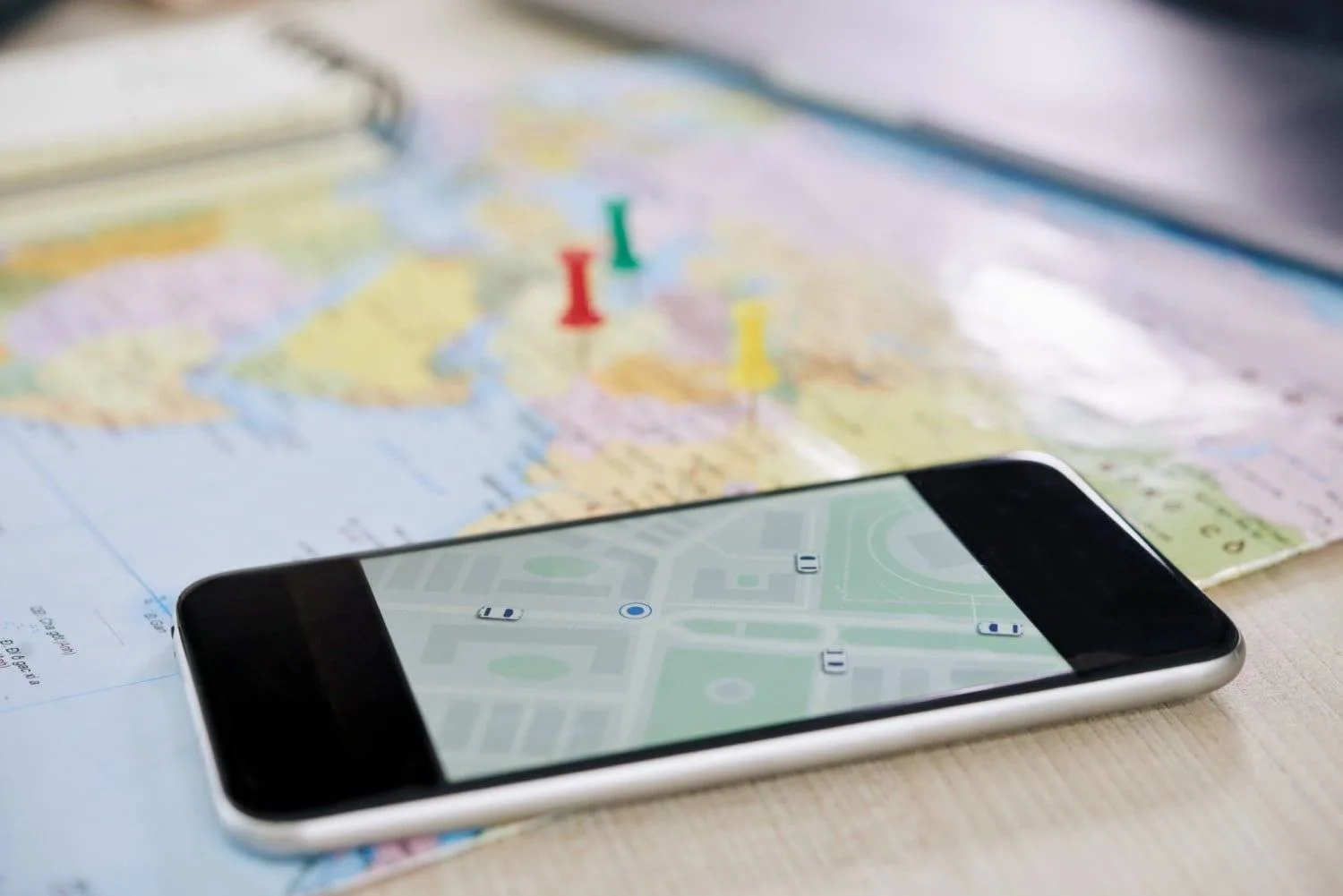GPS technology is quickly becoming a key component in many aspects of our lives. The GPS is used for cars, navigation systems on boats and airplanes, and even in our pocket cell phones. GPS stands for global position system.
The Global Positioning System was first developed and owned by the U.S. Department of Defense. It was initially meant to replace the older U.S. locations locator technology, which at the time was being replaced by the more accurate Global Positioning System or GPS.
Today GPS has a whole new dimension. It has entered into the consumer market as well. There are now a variety of GPS product manufacturers. These GPS manufacturers offer a variety of GPS products including GPS trackers, GPS navigators, GPS phones and GPS systems.
GPS trackers are designed to be placed near the vehicle so that they can track its location at any given time. GPS trackers are used primarily for automobile navigation and mapping purposes. They are also used in freight and passenger tracking. GPS trackers can also be used to locate people.
GPS technology was initially developed to aid the military in their navigation and mapping needs. Today GPS is also being adopted by most of the commercial and government industries. It offers a cost-effective navigation system and helps users find their way in a complex and unfamiliar territory.
GPS technology is also widely used in the military. For instance the U.S. Air force has adopted the use of GPS technology for many of its fighter planes and navy vessels. The military needs GPS because it gives them precise positions of the combat forces. They also need to be able to know where all the troops and other military equipment are located.
GNSS
If you are not familiar with the GNSS or Global navigation satellite system, then it is time you did so. Global navigation or sat nav system is basically a device which uses globally-averaged satellites to give semi-automated geographical positioning.
It enables small hand-held electronic devices to accurately determine their current location with extreme accuracy using short-waves transmitted by satellites from geostationary satellites.
As a user, you get a unit that has a global positioning system built-in and a set of receivers, which are specifically meant for the purpose of accessing GNSS systems.
These receivers can be used with any Sat Nav application including maps, directions, postal delivery services etc. There is another variant in the form of GNSS receivers and displays. They are specifically designed to work with global navigation satellite systems.
Global navigation satellite systems use signals from satellites that orbit the earth every day and transmit their position data down to earth. These signals are bounced off the earth and are received by the receiver on the earth.
The process is then converted into coordinates by the receiver into help of some basic geometrical calculation techniques. These signals are then translated into latitude and longitude data by the receiver using the triangulation algorithm.
Various GNSS systems
GLONASS
GLONASS is a Russian satellite navigation system operated as part of a global, geostationary-orbital radio navigation service. It offers an alternative to Global Positioning System (GPS) and is second to GPS in overall global coverage and of similar accuracy.
While GPS can give precise positions in less than one second, GLONASS has a range of 24 satellites in orbit which are all tracking satellites that continually provide positioning information at more or less constant intervals.
GLONASS became operational in year 1993 with 12 satellites in 2 orbits at the height of 19,130 km.
Galileo (EU)
Galileo (or Galileo Satellite), refers to an EU mission devoted to getting direct measurements of the Earth’s atmosphere
The first satellite, launched on 18 October 1989
Because the Galileo system is a joint project of several countries, there are several different versions of the constellation. The primary model uses European fixed-array antennae to relay radio signals from the ground-based terminals on the Earth, while the side-looking Global Positioning System model is made up of reflectors on the surface of the Earth and a Global Navigation Satellite model, which send navigation signals down to the ground station.
As it turns out, the Galileo constellation has helped to improve global navigation, as well as making it much easier for aircraft operators to communicate with each other. It has also paved the way for improvements in technology, such as the widespread use of cellular phones, which are now able to send and receive data from aircraft and satellites in orbit

Mobile Phones
GPS technology is also being used in many of today’s mobile phones. A popular application in this regard is the GPS trackers for iPhones and Android devices. The GPS trackers help the users to find their way in case they get lost. The GPS technology is also being adopted in some of the high end watches. GPS tracker embedded watches help to keep a track of the user’s workout and other activities.
GPS Tracking
A GPS tracking device, geo-tracking device, or just GPS track is a navigational tool usually in a vehicle, human or machine that utilizes the Global Positioning System to measure its velocity, position and determine its precise location to determine its precise location.
There are many ways that this type of device can be used. Most often, GPS trackers are used by law enforcement personnel to locate wanted vehicle criminals, but they are also used for locating missing children, hikers, people with Alzheimer’s, and many other conditions as well.
The primary use for a GPS tracking unit is in a vehicle. When a GPS navigation device is installed in a vehicle it serves a dual purpose. It helps the driver to maintain a safe speed and avoid excessive weaving, excessive speeding and will also determine the exact position of the vehicle at any given time. In the case of a stolen vehicle or a roadside accident a GPS tracking unit can provide important evidence to assist in recovering vehicles.
GPS tracking is not only useful for a motorist. Its application is growing quickly to aiding companies in their daily operations, ranging from real-time inventory management to fleet management.
In the case of fleet management companies like Enterprise Resource Planning, GPS tracking provides an accurate and comprehensive real-time picture of the health of their fleets, enabling fleet supervisors to quickly pinpoint problem areas and implement solutions.
Also, in the case of a company with a large fleet of trucks, for example, updating and maintaining fleet maintenance records can be extremely time consuming and difficult to manage manually, especially when irregularity occurs. Real-time updates from a GPS tracker can eliminate this problem, as fleet maintenance schedules can be immediately updated with precise data.
Travel
GPS technology has also made travelling easy. Gone are the days when you had to depend on your compass and maps to find your way.
When considering buying a GPS for travel, you should make sure it comes with a variety of built-in functions so you can use it regardless of where you plan to go. You should look for a unit that has gas stations, toll roads, nearest restaurants, and real time traffic information.
A good device will allow you to enter address information and find directions right on the device so you do not need to look for any specific information on the Internet or in the phone book. In fact, most GPS models come with a built-in web browser so you can quickly find the address or any information you need to get to where you’re going.
Some of the best GPS units have voice recognition so you don’t have to touch the screen while you’re navigating; this can be particularly useful if you have a cell phone or are using public transportation.
In Car Navigation Systems
Car navigation systems are extremely popular, especially among motorists who want to use their GPS systems while driving. Many automobile GPS units have grown to be extremely reliable and dependable over time.
There are many different kinds of GPS car navigation systems, from simple systems that you mount inside your car, all the way up to sophisticated systems that are often used by helicopter pilots. All kinds of automobile GPS systems offer different features and benefits to consumers. Some popular GPS brands include TomTom, Navman and Garmin.
Tom Tom
TomTom is one of the most popular GPS brands on the market. They currently provide navigation systems for about thirty plus different makes and models. TomTom manufactures digital GPS navigational products that are easy to use and are great for motorists and those who Cross country driving.
Navman
Navman is another GPS brand that is very popular among motorists. They produce a variety of different types of GPS navigation systems and accessories, all of which are very user friendly. Navman also produces a satellite navigation unit that is similar to the TomTom system and is compatible with almost any GPS vehicle mount.
The Navman system also has an optional satellite receiver that can be added to the vehicle system and can be programmed to turn on when the car lights or signals change. This feature has helped to increase the usability of Navman navigation systems.
Garmin
Garmin is one of the largest manufacturers of GPS and other navigation equipment. Garmin’s newest systems, such as the Garmin Nuvi GPS are extremely popular.
The Garmin GPS system is comparable to TomTom’s in many ways, both in terms of price and ease of use. It does not matter whether you are a novice driver or a seasoned driving pro, you will find that the Garmin GPS navigation products are easy to use and understand.
Most Garmin GPS products are also compatible with satellite radio systems and most people find that they can use the satellite radio capabilities to increase their on-road time.
Consumers
In car GPS Navigation Systems offers consumers a great combination of GPS and satellite technology. In car navigation systems without a satellite to connect, the GPS device is used to program the destination and it will recommend several different routes.
How they work
These GPS systems use a triangulation algorithm to determine the best route based on the GPS information and what the car’s GPS sensors are showing. With a GPS navigation system with a satellite connection, the route is determined by analyzing the position of the satellites that are overhead and below the GPS receiver.
The satellites signal the position of the GPS receiver and the system then recommends a number of different roads on which to traveling and which of these roads have the least amount of turns or traffic jams.
Advantages
One of the best things about these GPS products is that they don’t require installation of the receiver inside of the car. Most systems for GPS navigation come with a wireless remote that is very easy to use. The controls are normally located somewhere inconspicuous and you can even push a button on the remote to turn the system on and off.
These GPS systems can be programmed so that they reflect your child’s favorite sports teams or you can program them so that they reflect your vacation destinations.
If you travel often on your car or you like to bring along your pet, there are many other types of products that are available that are designed to help you get the most out of your car. Car navigation is becoming more popular among consumers and in car audio systems, the technology is only getting better.
Aviation
Aviation GPS systems from Garmin are designed for use by the aviation professional, as well as the general aviation customer. Purpose built Aviation GPS units by Garmin and iFLY provide several benefits.
The system features an impressive rechargeable battery, which makes it very convenient to carry. The large, fully illuminated screen allows the pilot to view all the detail of the current view point at all times.
iFLY Aviation GPS is designed for use with the latest generation GPS handheld navigational devices (GPS or Global Positioning System). The GPS device provides accurate position data during all phases of flight, providing the user with up-to-date information during their journey.
This allows the aircraft navigator to make more informed decisions about course deviations and other navigation maneuvers. iFLY Aviation GPS is a great asset to any pilot looking for dependable navigation while on the road. Even when you’re on the ground the GPS navigation system offers outstanding navigation accuracy within just a few feet of the plane.
In addition to providing GPS facility, the Aviation GPS product range from Garmin also includes a range of en route instruments, such as air-to-air missiles (AIMs), military communications and radar equipment, and the world map.
The new Garmin Aviation GPS products are designed for the new breed of pilot, who is looking for the most sophisticated navigational solution to modern day flight challenges.
The user-friendly interface of the Garmin Aviation GPS products has made these devices a favorite of the flight crew as well as the commercial airlines and cargo services companies. With the inclusion of GPS facility in the cockpit, the aircraft crew can no longer rely only on their navigator but can take full control over the flight condition and safety parameters.
Satellite Navigation
A satellite navigation or “Sat Nav” system is simply a device that employs satellites to give true, Geo-spatial location on the earth. It enables small electronic devices to accurately determine their position using time signals emitted by orbiting satellites, via radio transmissions sent along a radio line of sight. It also offers other functions such as displaying satellite positions above the earth and other terrestrial locations. The latest models can be used even while drifting in an automobile.
While a satellite navigation system can easily locate you with just the name of your street, finding your way could be much more complicated. Knowing your direction and the best way to get there, becomes a challenge.
To get over this difficulty, a GPS Navigation system employs timing and accuracy which rely on received signals from radio satellite signals. This information is processed by the microchip-based unit and produces true time satellite signals. With the satellite navigation’s ability to offer accurate positioning it is possible to reach places that are otherwise unreachable with just a map.
There are two main types of satellite navigation. The first one utilises earth-based signals such as GPS signals obtained from satellites orbiting the earth. The other utilises microwave signals emitted by vehicles themselves.
Either method is used to send precise signals to the receiver which in turn, decodes and processes the information and produces an accurate positioning.
Types
1. Earth-based signals
2. Microwave signals
GPS Satellites
GPS satellites are the different production generations of the Global Positioning System, which is used for worldwide satellite navigation. The first GPS satellite, Navstar 1, was actually launched on 22 February 1978, 23:44:00 UTC.
It is operated by the United States and is able to provide accurate positions within about one hour. The satellites operate in a synchronous orbit around the Earth and it is estimated that they could go as far out into the solar system as 100 million miles.
There are so many other varieties of GPS satellites as well, and each has its own features which you can find out more about if you take the time to do a little research. You will be able to tell if a satellite is really reliable by looking at its position.
If you are wondering what GPS satellites are used for, then the answer is quite simple. They are used for everything from aviation to construction and roadways. It is estimated that in North America alone, there are about 25 billion pieces of GPS equipment which are currently in use.
There are many different brands such as the Global Star GPS III satellites and Locklear GPS satellites, but as far as what they are used for, you can expect them to be mostly used for aviation since they are very accurate and can easily pinpoint your location.
When you are using GPS for navigation or positioning you need to be sure that you are not relying on a single source of information because there are certain geographical areas which are difficult to access by just using GPS technology.
If you have to travel in remote areas then you will need to have a separate receiver for each destination that you wish to reach. GPS satellites are useful for this, as they are able to pinpoint your exact location in these areas by giving you a relative position and velocity.
As long as the satellites can point to your precise location then you will have complete freedom in your GPS navigation. Some of the new GPS models that are being released today will have more selections in terms of GPS satellites and this is only expected to increase the number of places where people will be able to access satellite navigation.
Who Invented GPS?
People behind the Global Positioning System.
- Roger L. Easton
Former head of Naval Research Laboratory’s space applications branch - Ivan Getting
Founding president of The Aerospace Corporation - Bradford Parkinson
Parkinson was at the forefront of the NAVSTAR GPS Joint Program Office from 1972 to 1978 - Dr. Gladys West
In 1956, Dr. West started working at the United States Naval Weapons Laboratory.
Summary – Concluding
GPS technology is helping to make our lives easier and simpler. We no longer have to depend on our senses to navigate or find directions. GPS trackers are a boon to many of us as it is also helping to make many aspects of our lives easier and simpler.







